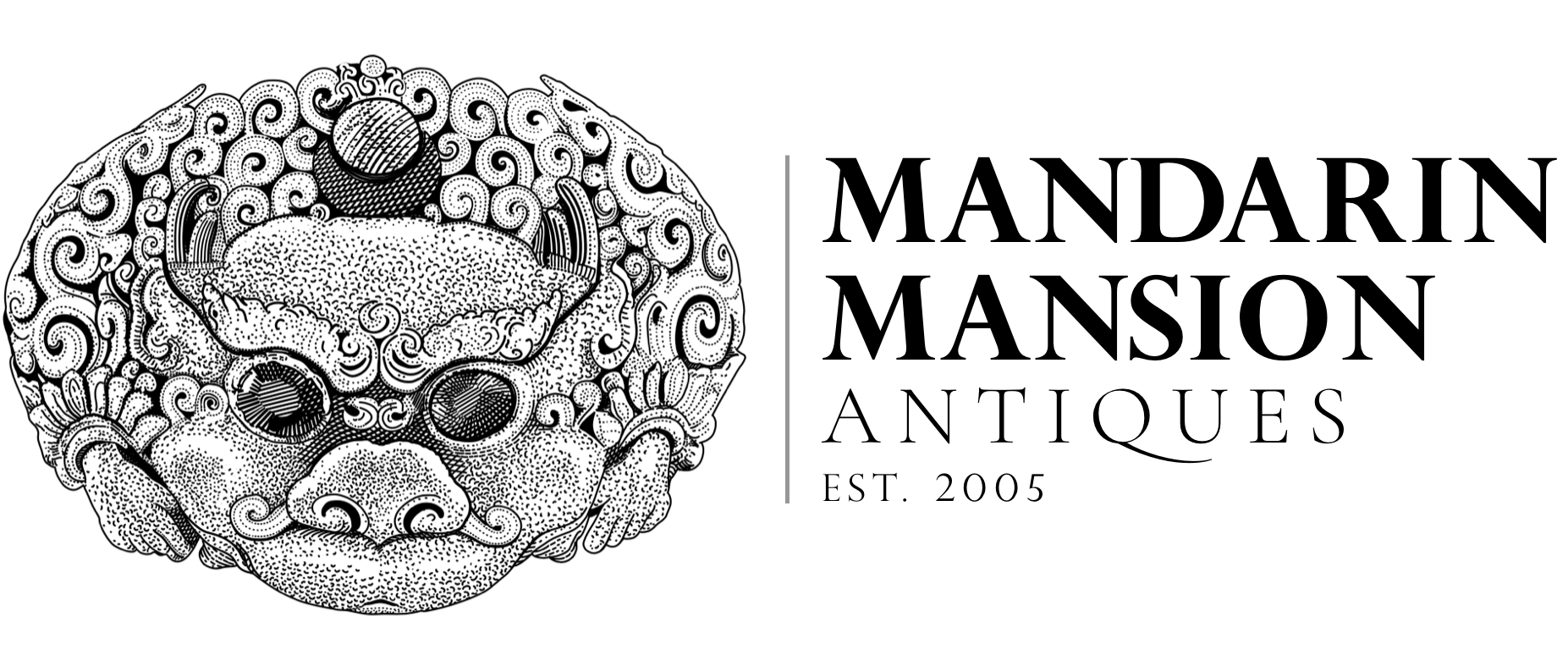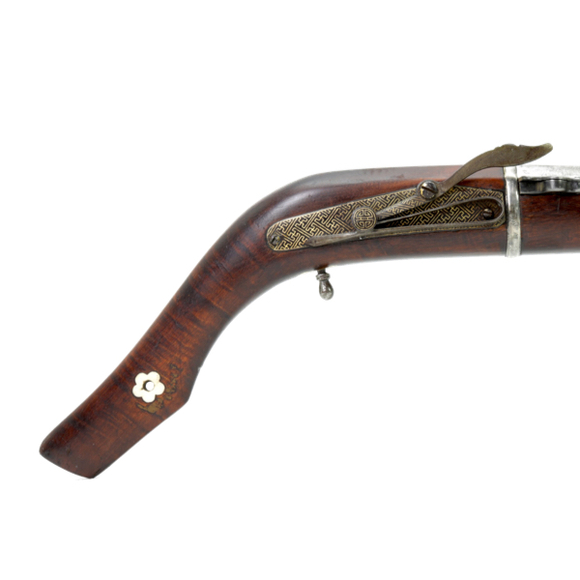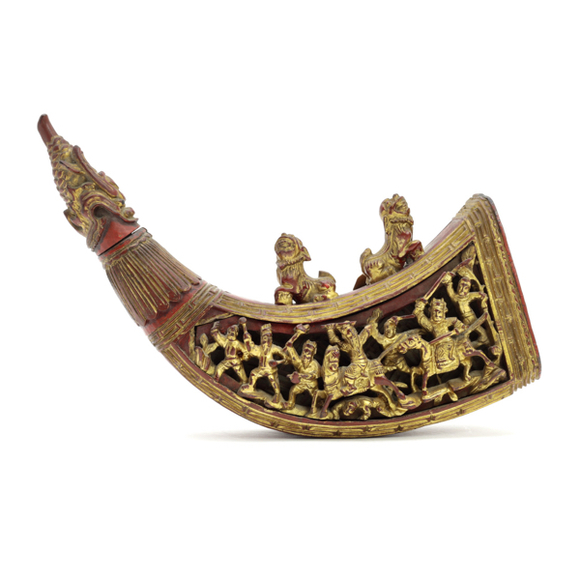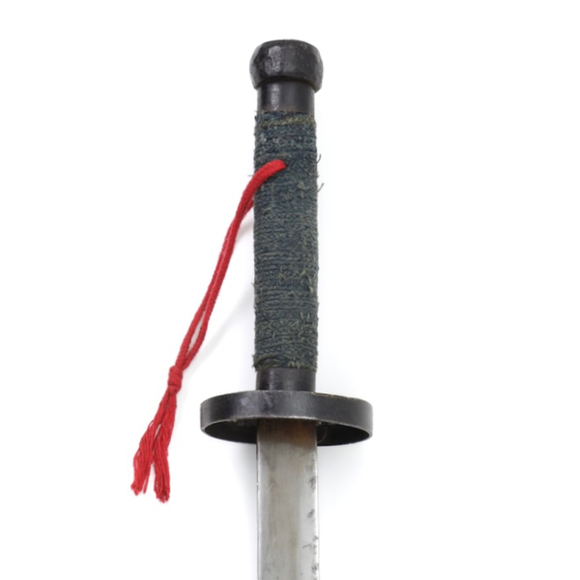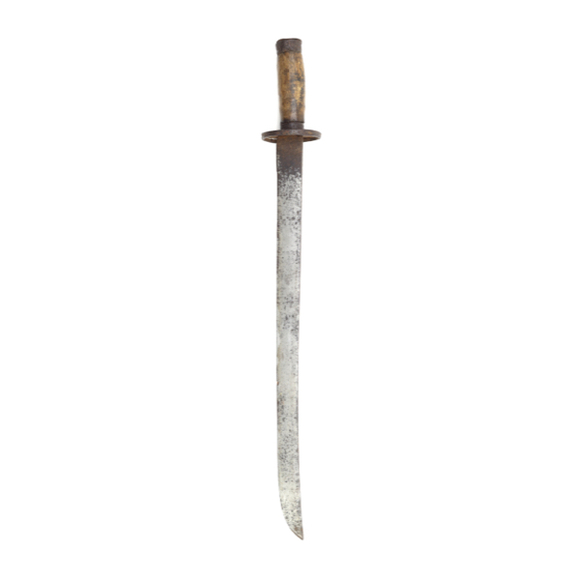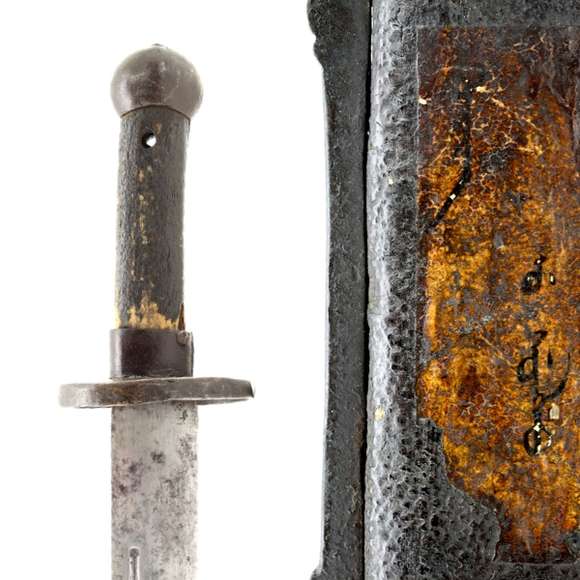With a golden damascened lock of the Indo-Portuguese type.

87.3 cm / 34.4 inch
70 cm / 27.6 inch
forte 7.5 mm
middle 5 mm
near tip 3 mm
forte 36 mm
middle 34 mm
near tip 31 mm
842 grams
China
Iron, steel, silver, wood.
17th or 18th century
A Chinese waist saber or yaodao / peidao of the first half of the 18th century. It has a superb blade in perfect condition and now in full-polish: No pitting, no nicks, edges and bevels crisp and clear. No signs of over polishing, tip intact. Only some very minor chips in the edge.
The precision of the grooves and ridges is as good as the better Japanese work. The blade exhibits a forge folded construction with a high-carbon edge plate sandwiched between layers of milder iron and steel. The blade also exhibits a pronounced shuangxue, the cloudy effect near the edge that is caused by the differential heat-treatment of the steel.
In its original iron mounts of substantial thickness, entirely with silver overlay except for the inside of the guard which is decorated with elegant acanthus leaf designs in silver on a black iron background. At the bottom of the leaves are three peaks, representing mountains, a common motif also found on Chinese imperial robes. The decoration represents the elegant aesthetics of the earlier Qing.
Blade style
The blade has a dorsal groove running around one-third up the blade, making way there for a long back bevel. Under that a longer, narrower groove. Such a configuration of grooves, up to the peaked end of the shorter groove, is well-known to the Japanese who refer to it as naginata-hi, named after the Japanese naginata, a pole-arm with a single-edged blade that is almost exclusively made with this groove combination. The configuration is also sometimes found on daggers, tanto, and swords, katana.
The earliest known sword with such grooves is the famous Kogarasu Maru (小烏丸) or "little crow" held in the Japanese imperial collection. It has the shorter dorsal fuller with extended bottom, a narrower central fuller, and a long backedge. The main difference with later naginata is that this blade is truly double-edged at the tip. If the Kogarasu Maru was straight, the sword profile would be very close to some swords the Tang dynasty. Some believe the groove configuration may have been originally Chinese as well, but without extant examples that remains speculation.
Legend has it that the sword was made by Amakuni who lived around 700 A.D. Amakuni is thought to have been the first to give the Japanese sword its characteristic curvature by applying a differential heat treatment. It may be that he applied this treatment on an otherwise regular Tang-style sword, creating the Kogarasu Maru. However, others have remarked that the blade looks more "modern" than that and should be placed around the 10th-11th century instead and the workmanship appears to be that of the early Yamato school of sword making.

A Tang dynasty sword. Japanese Imperial Collection at Shōsōin .

The original Kogarasu Maru. Japanese Imperial Collection.

A saber from the Qing imperial collection, attributed to the Qianlong emperor.

The sword that is subject of this article.
Restoration history
Blade in full polish. Handle and wrap are renewed. Comes with a snugly fitting resting scabbard.
Conclusion
When it comes to blades, this is about as good as Chinese sabers get. The forging and grinding are of the highest quality and the condition of the blade leaves nothing to be desired. The blade decor exhibits a distinct style of grooves and bevels that originated at least a thousand years earlier.
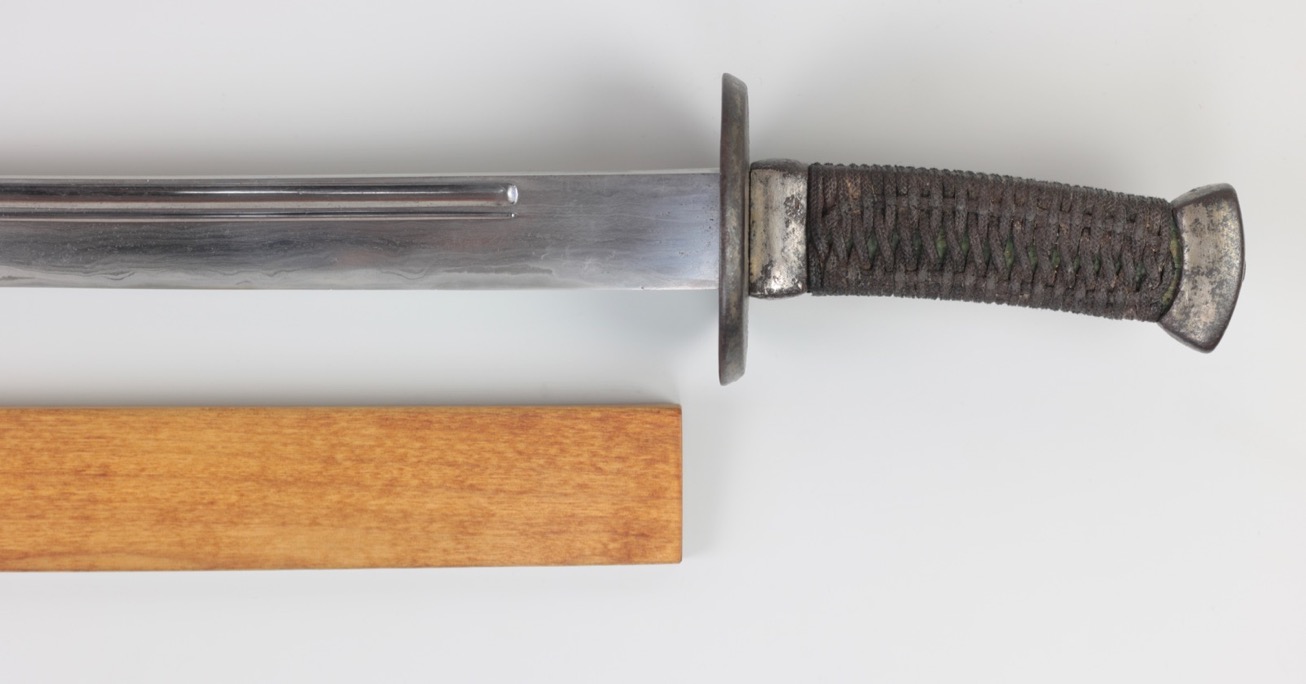

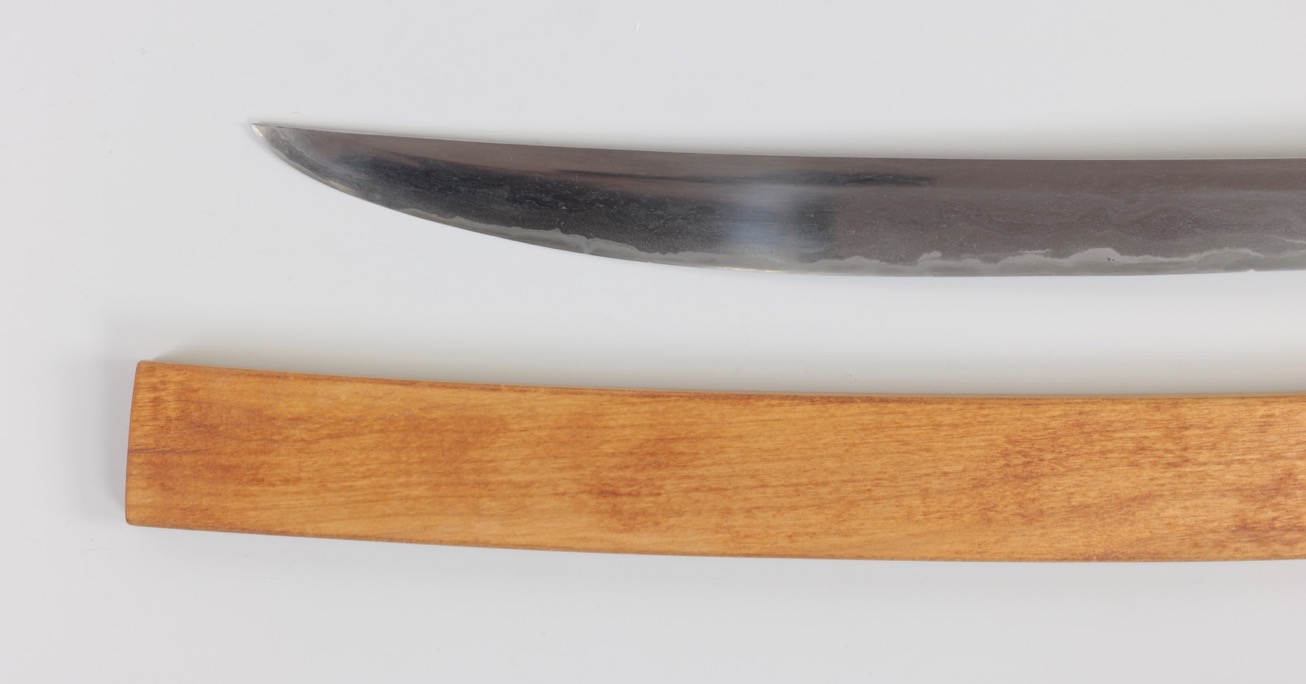
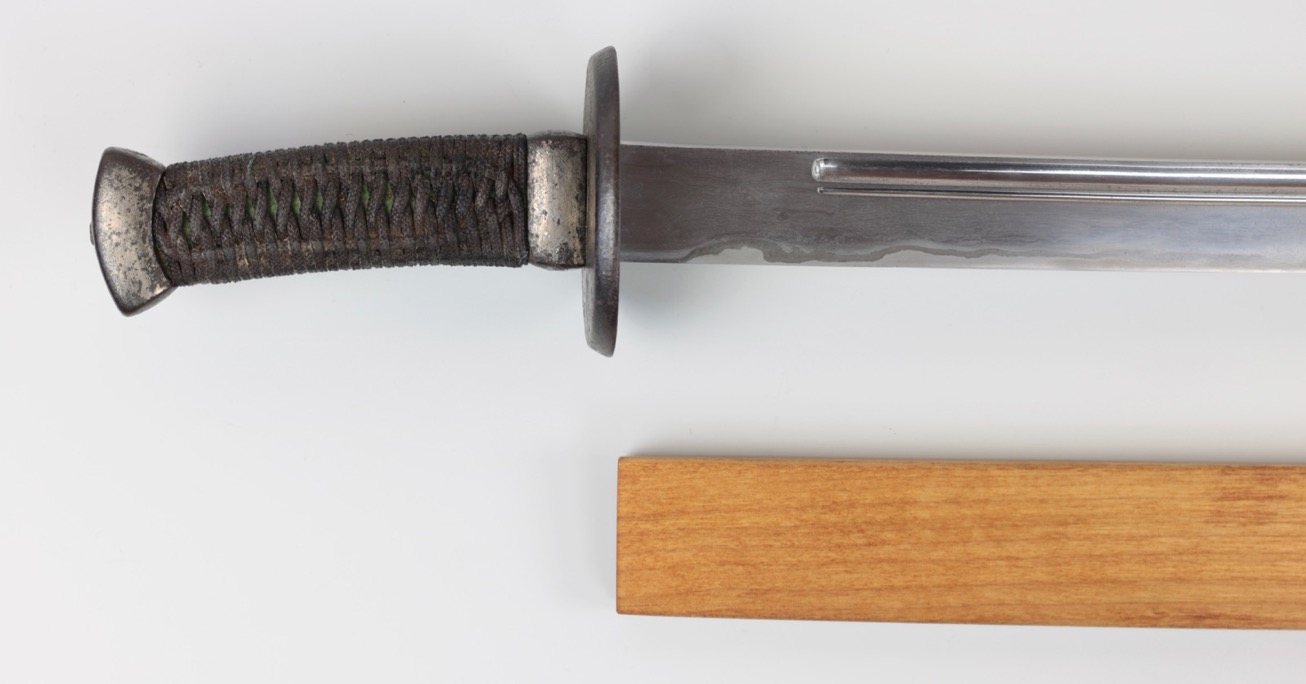
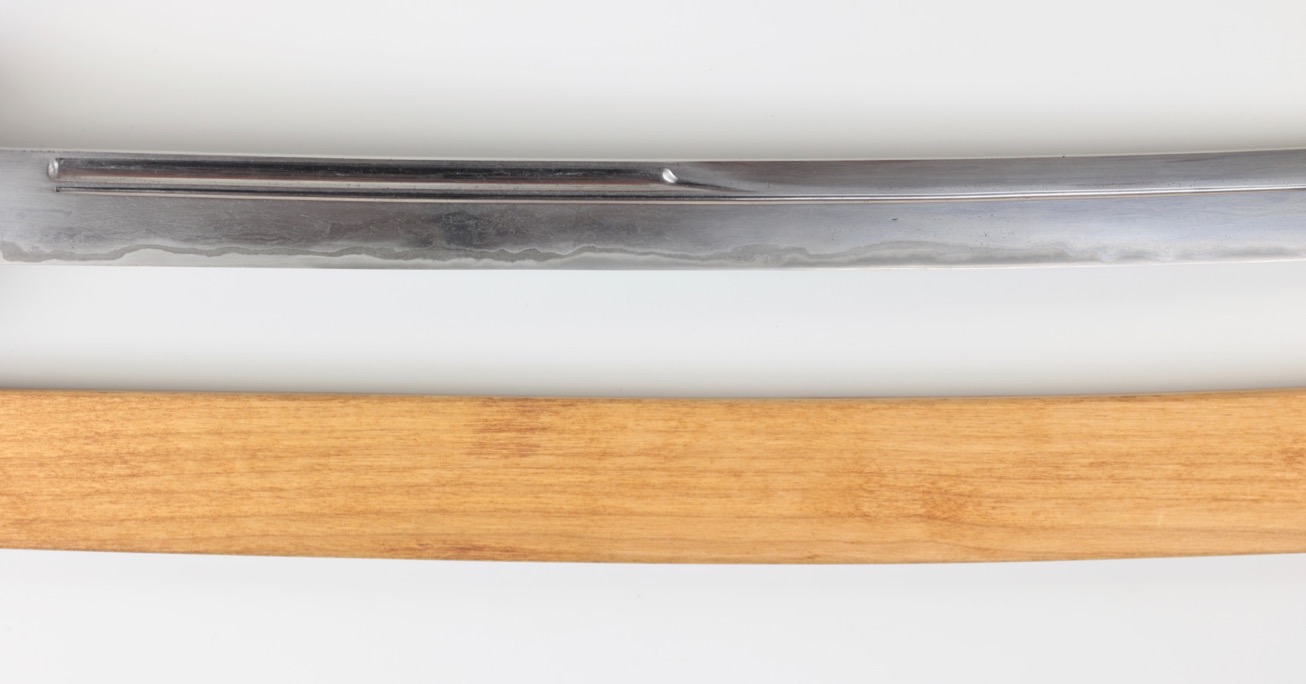
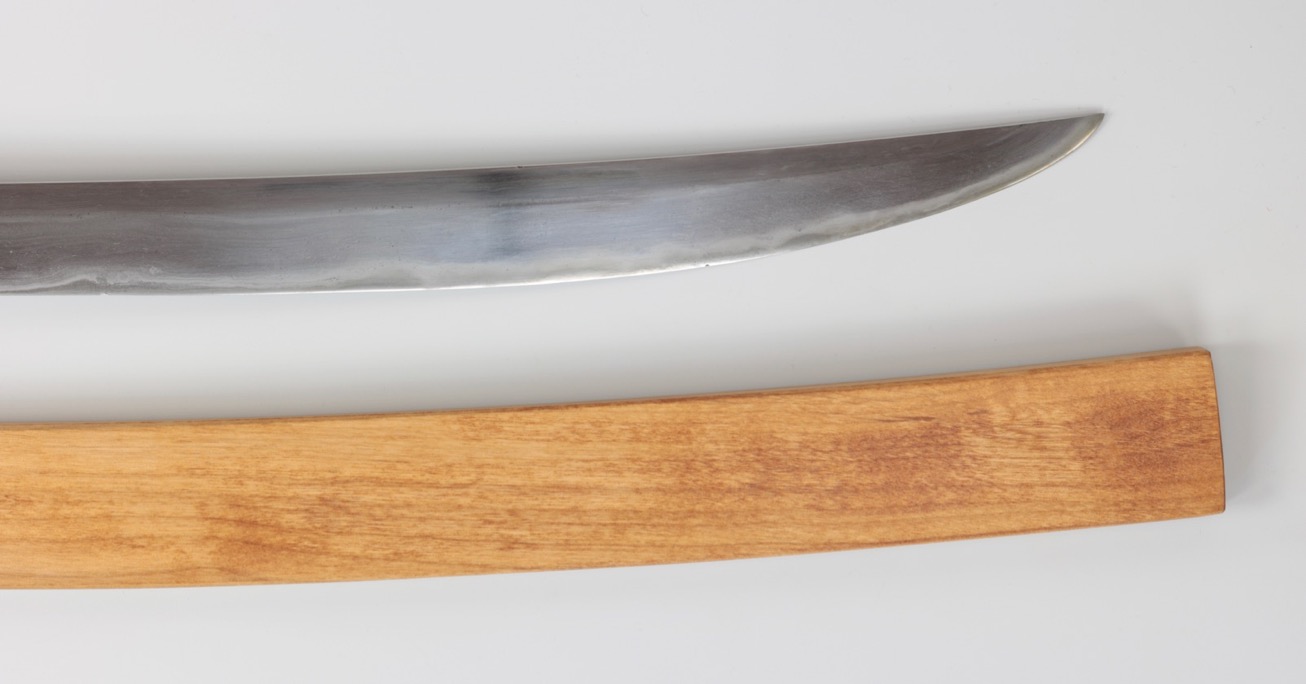
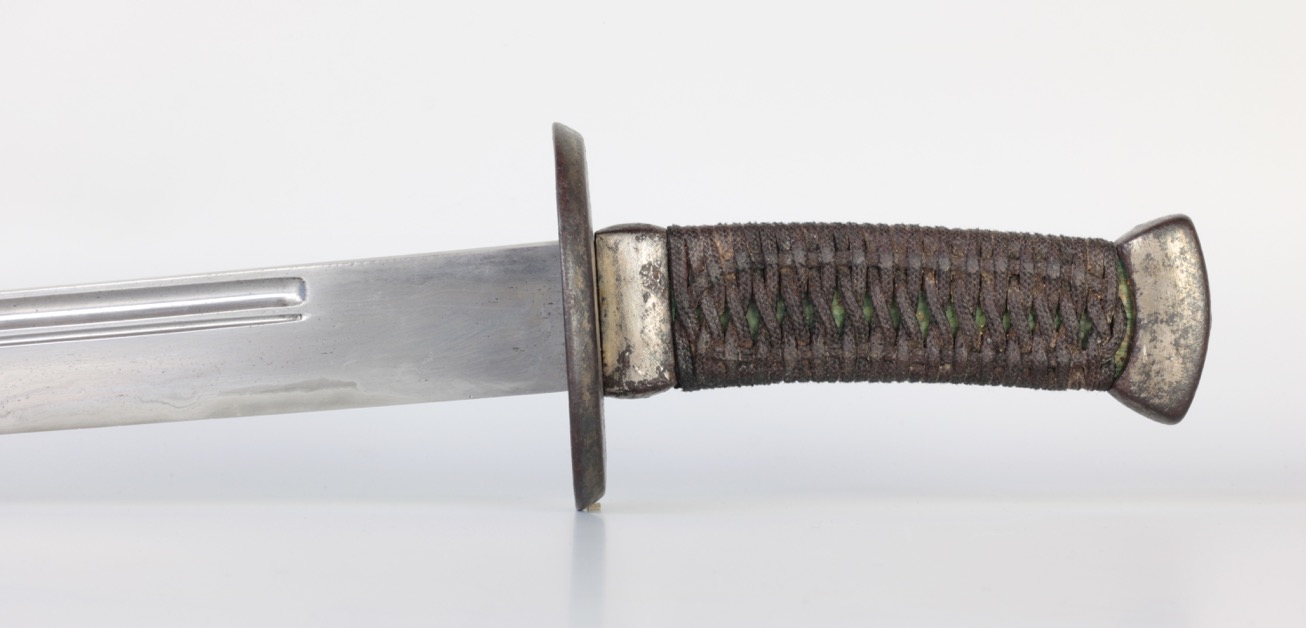

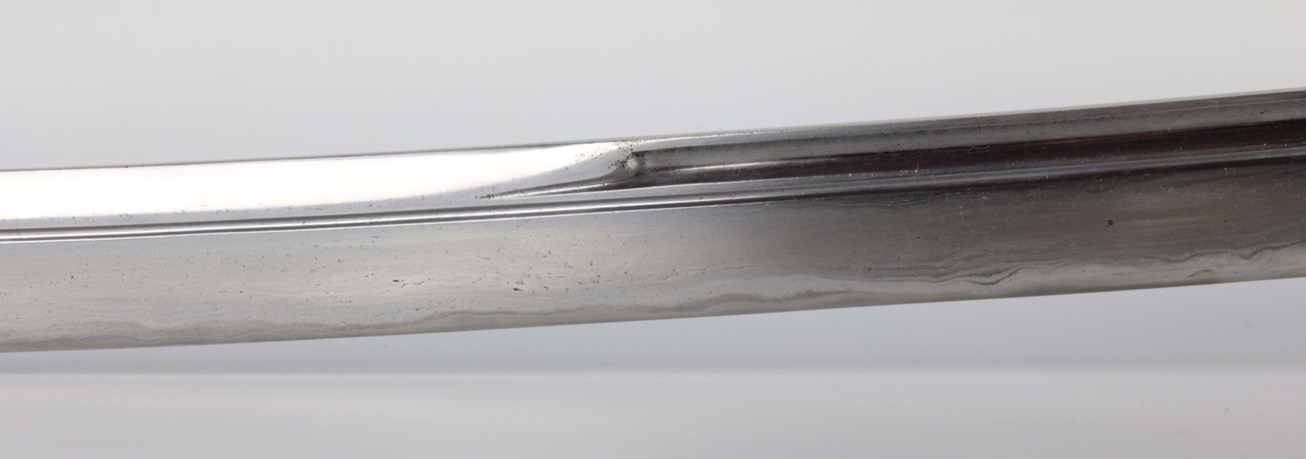

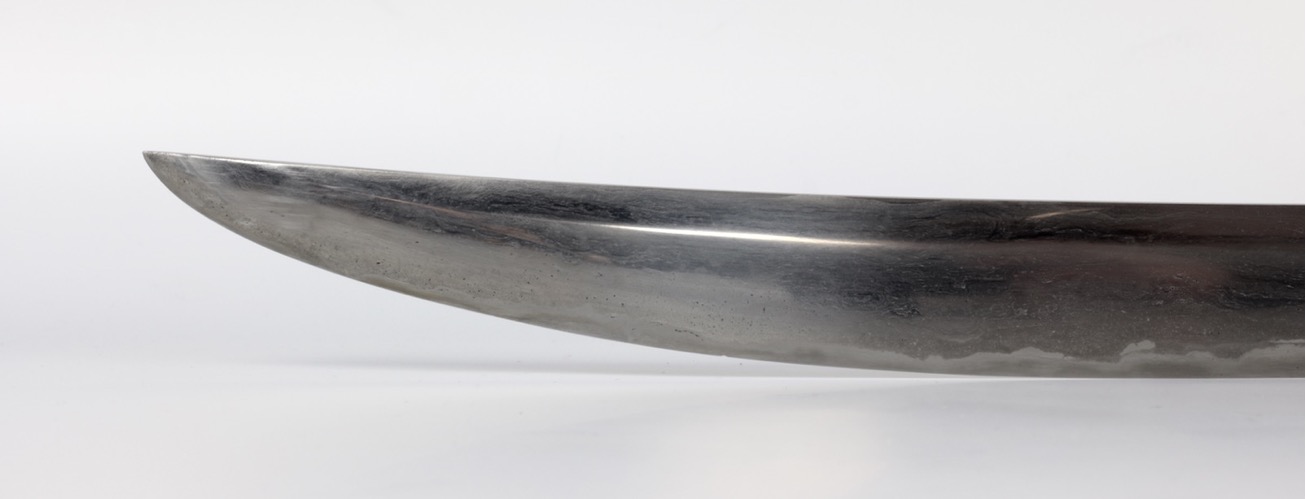
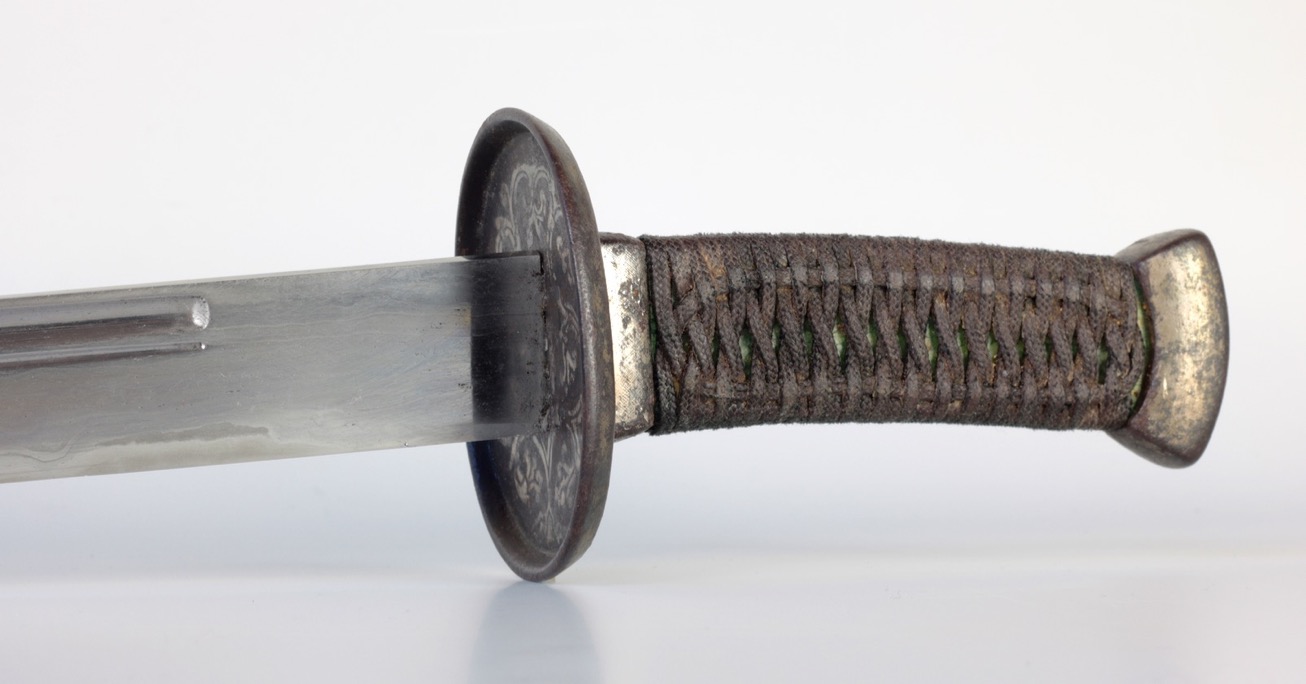
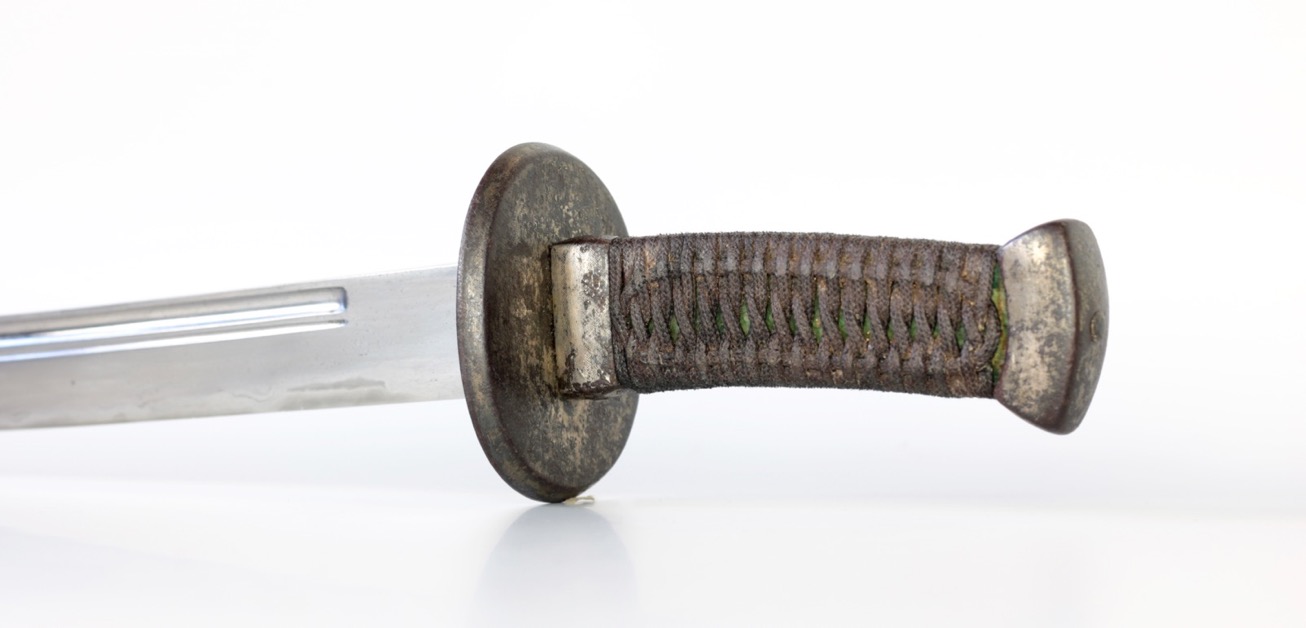
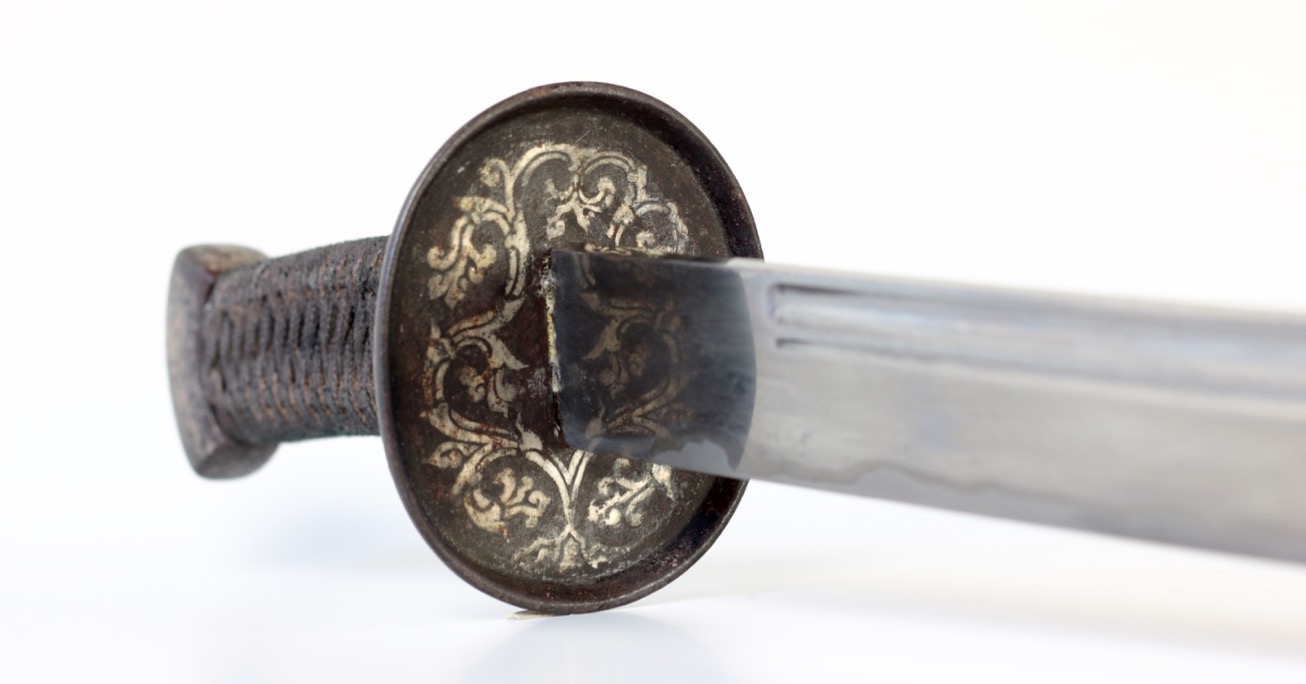
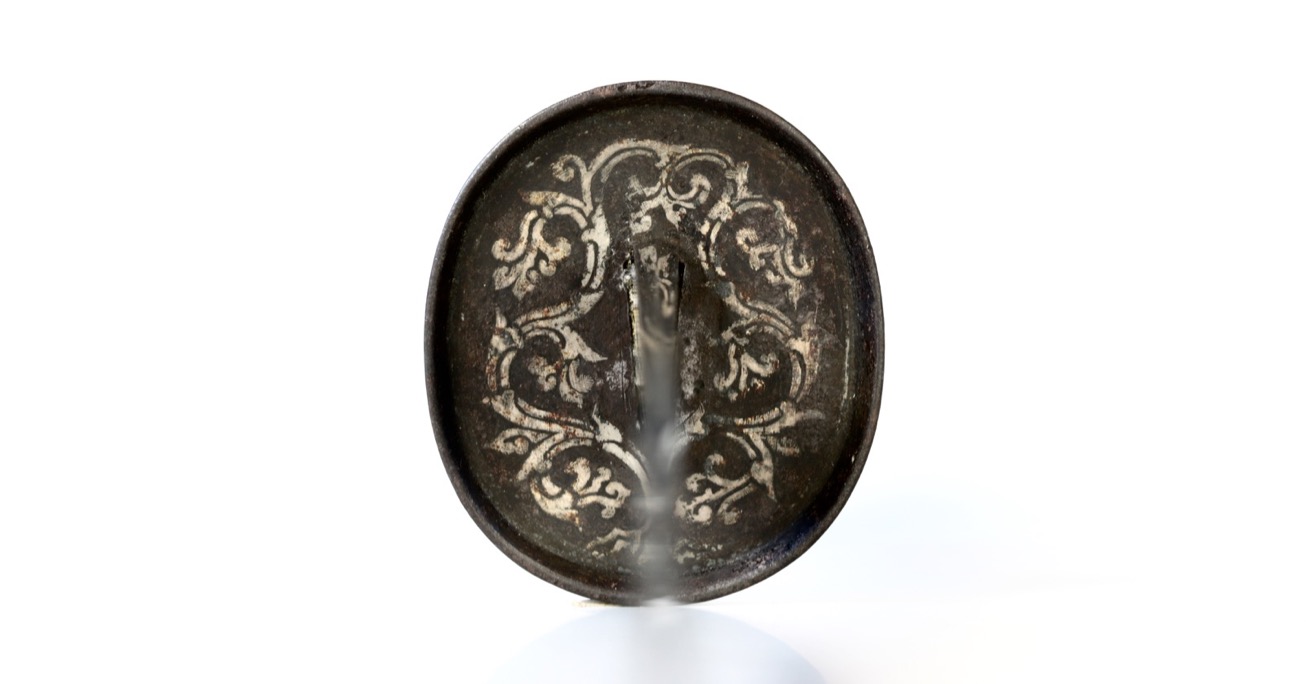
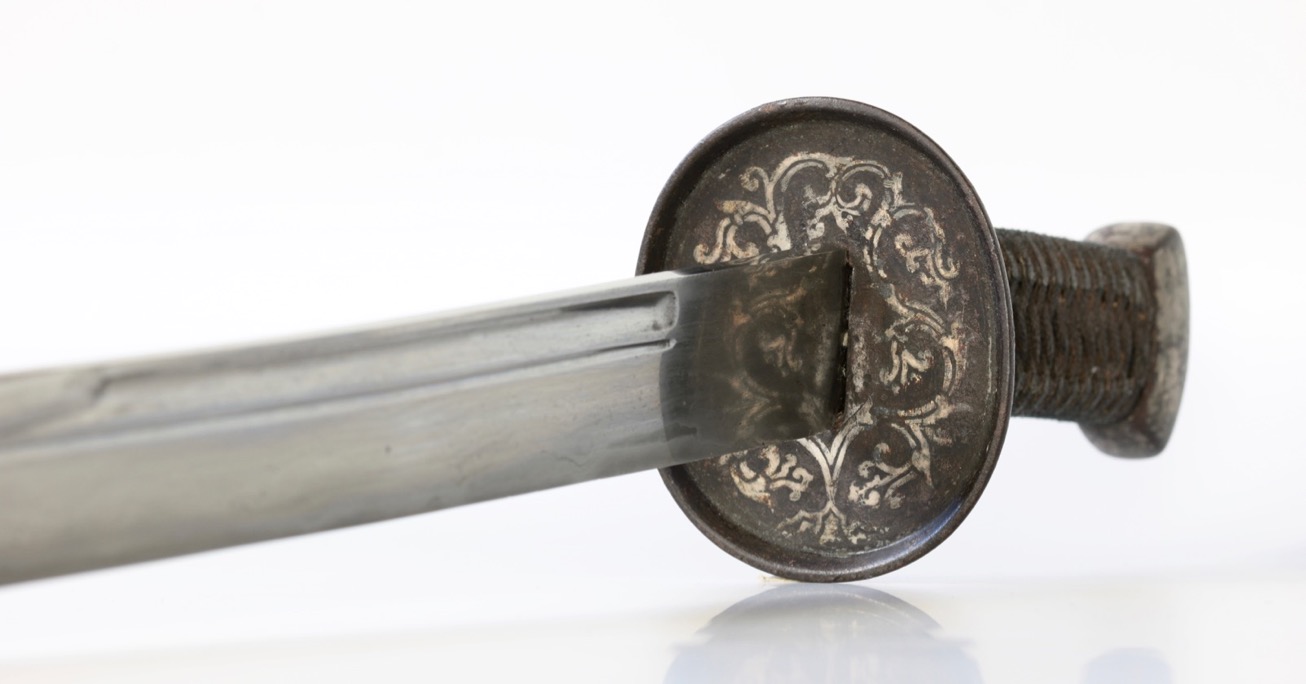
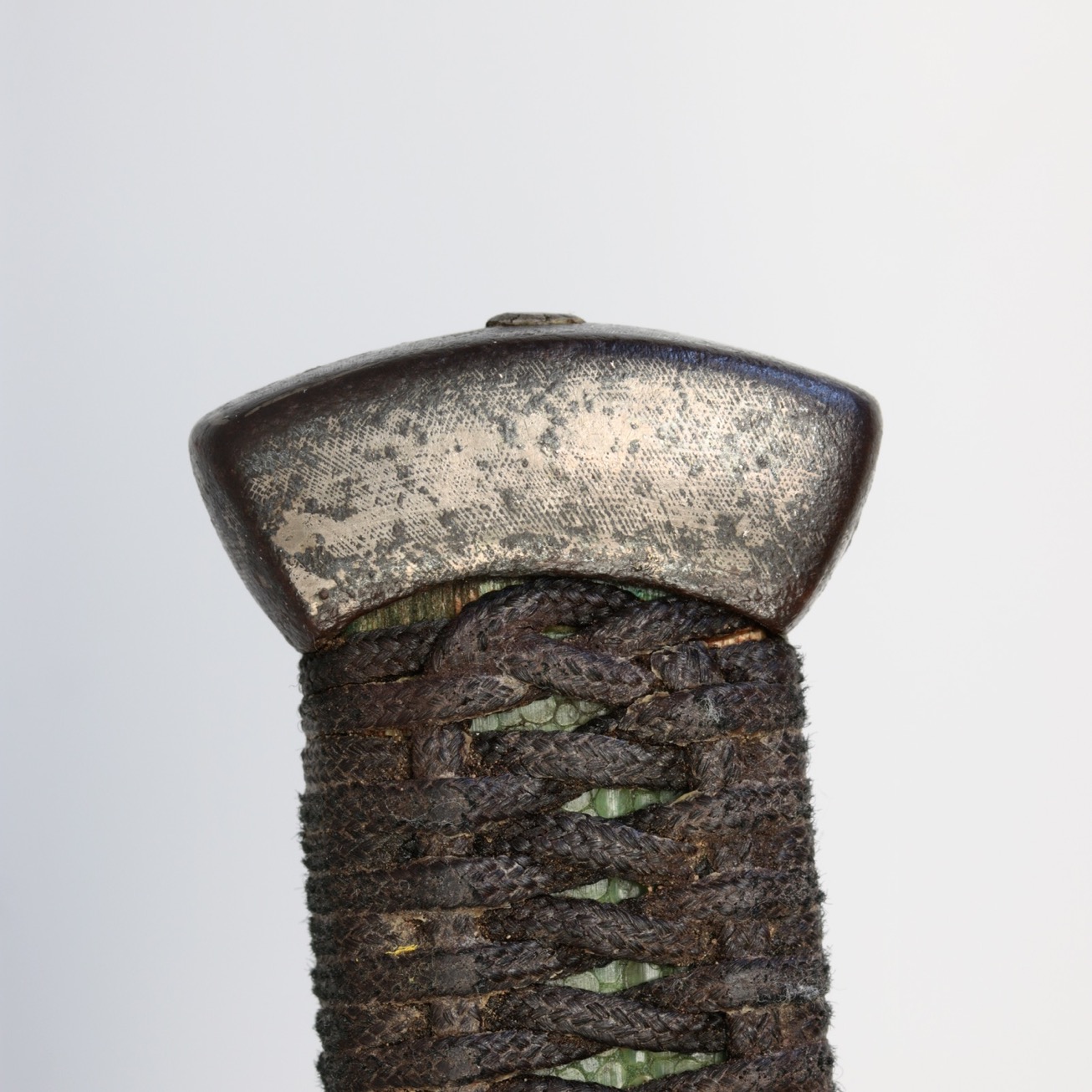
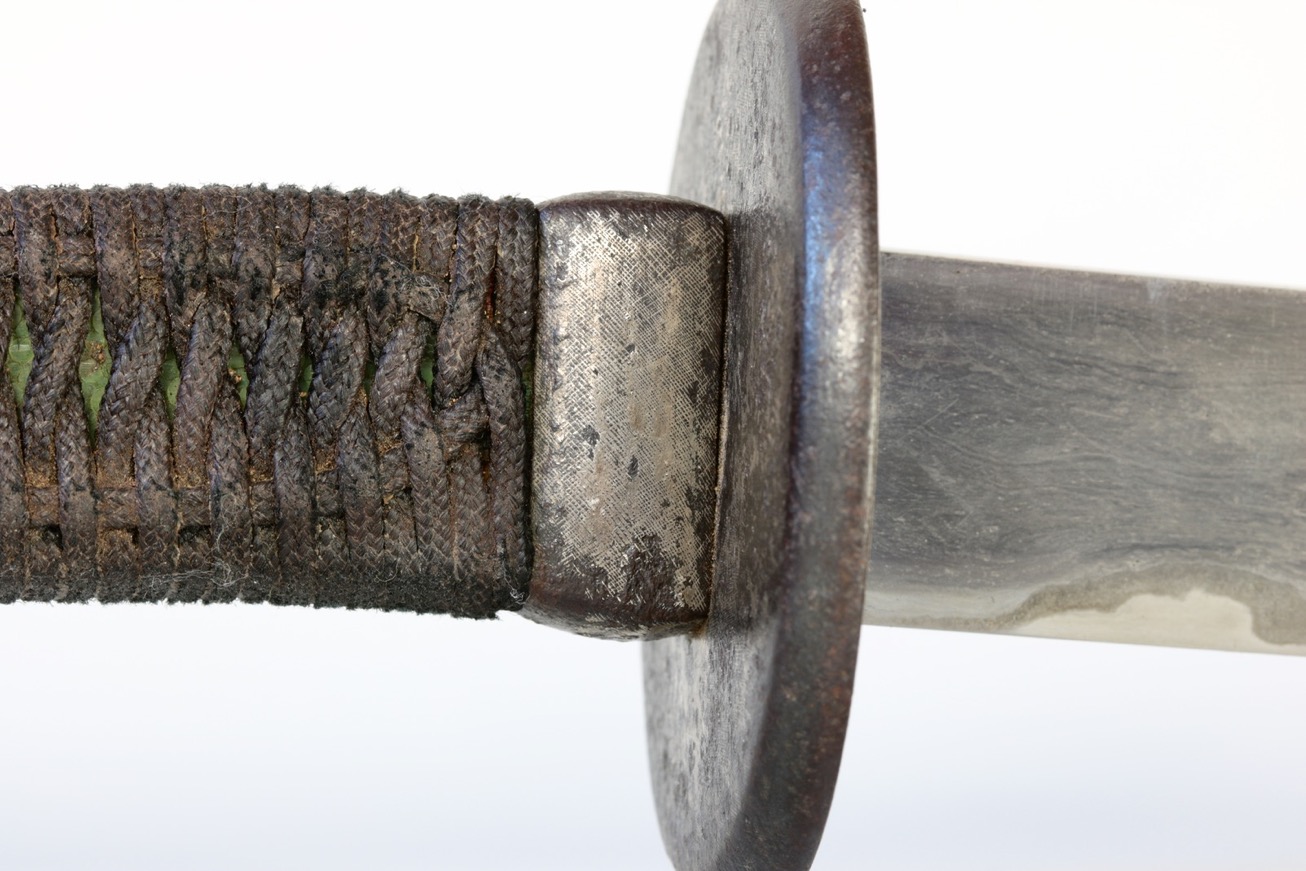
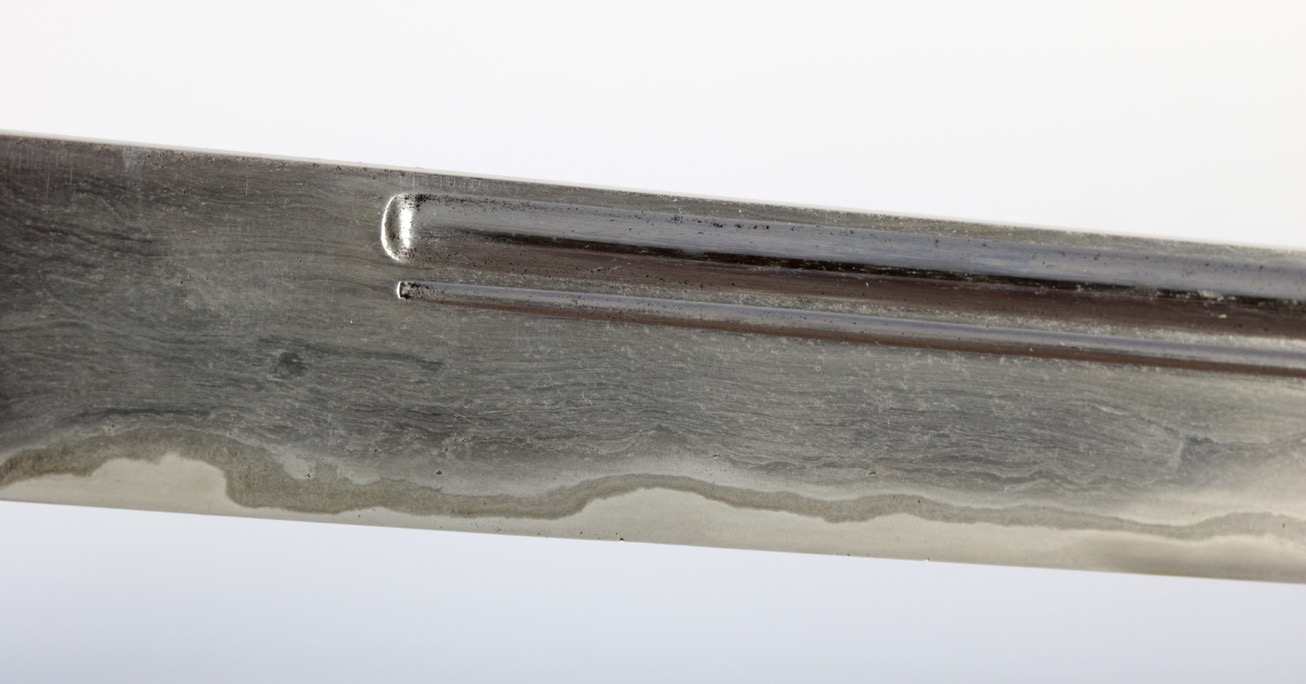
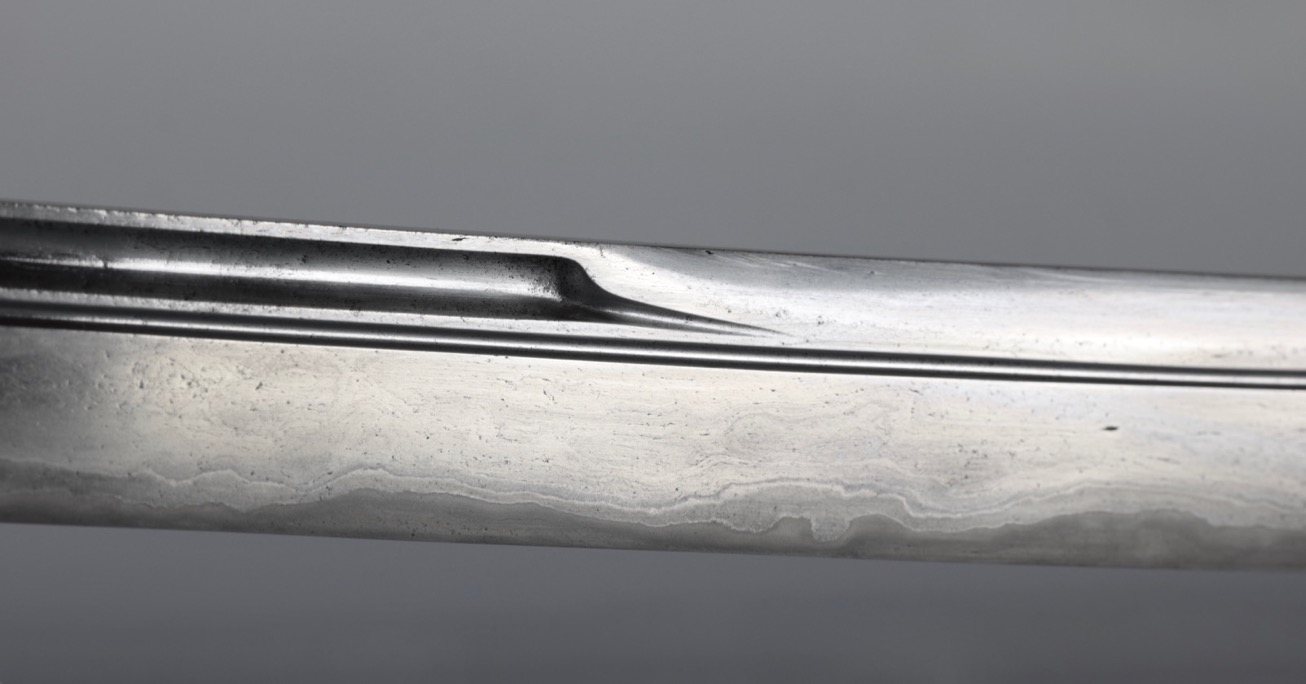
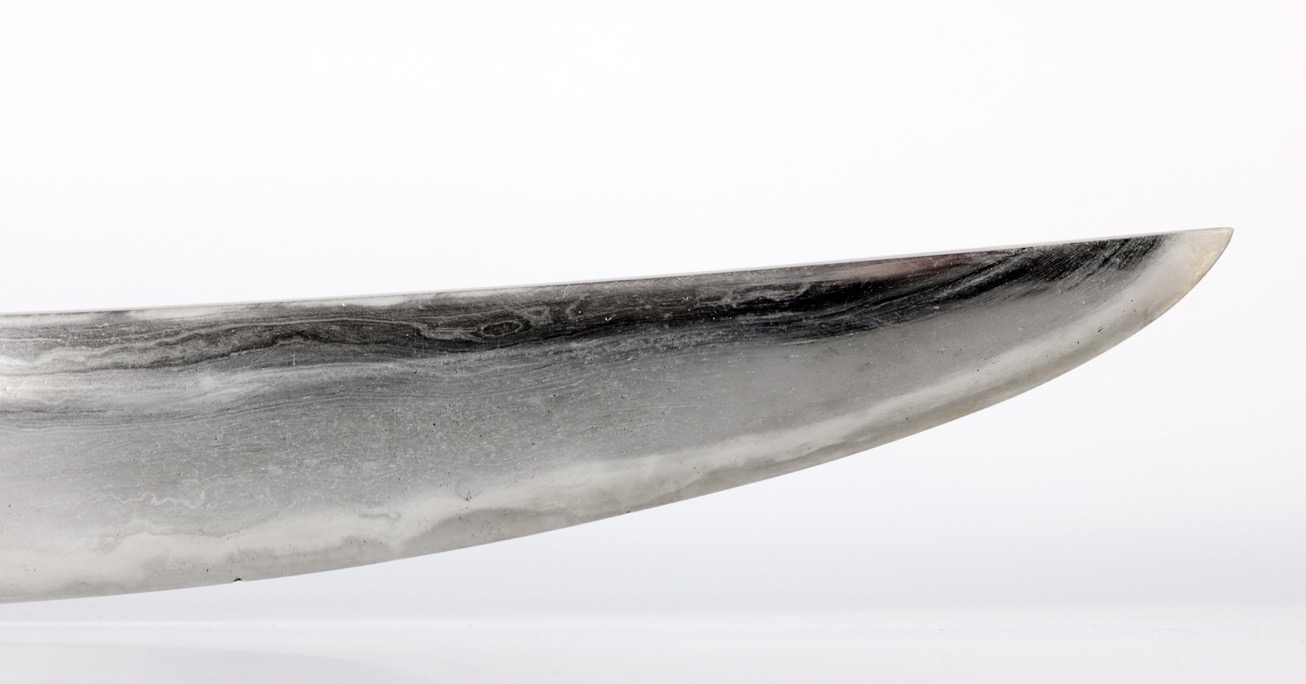
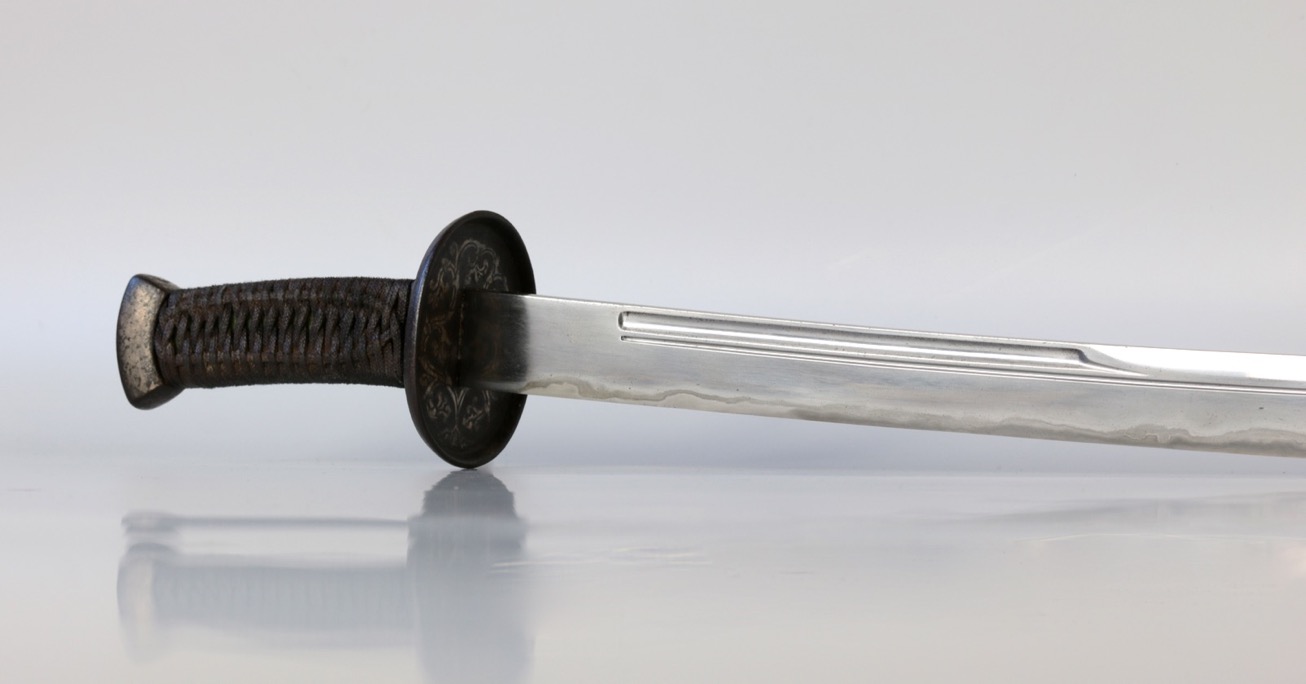
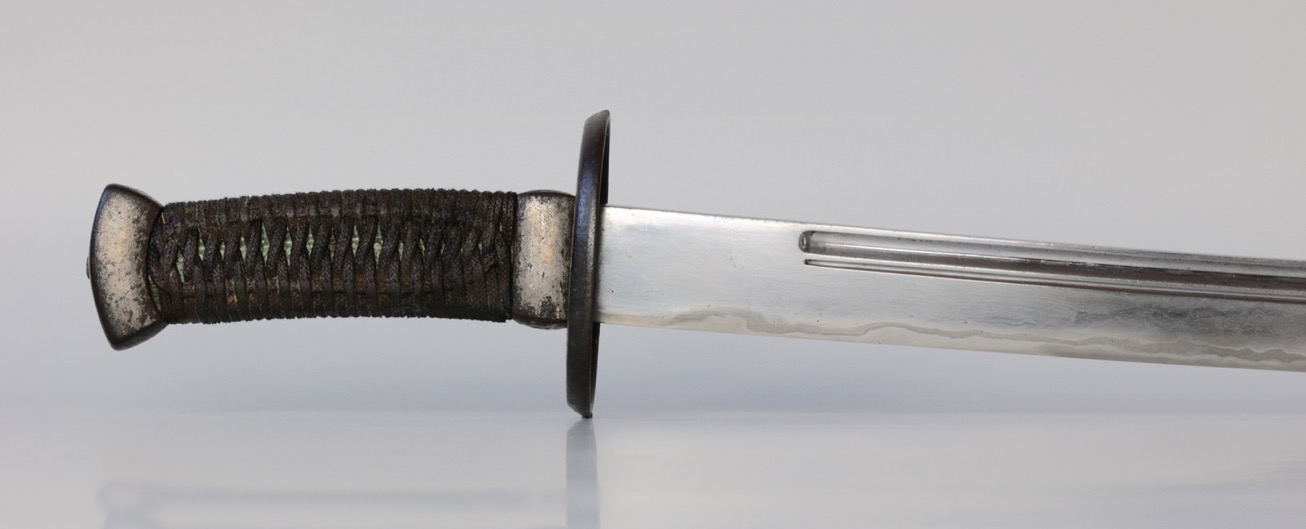
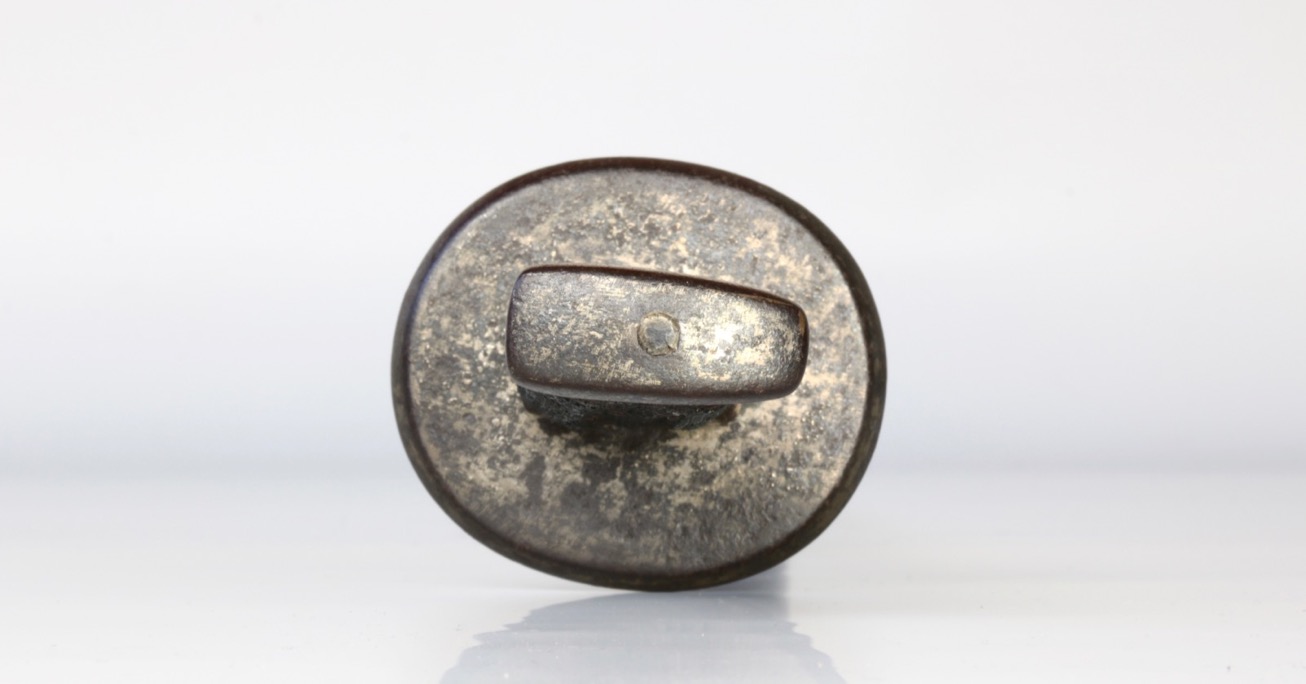
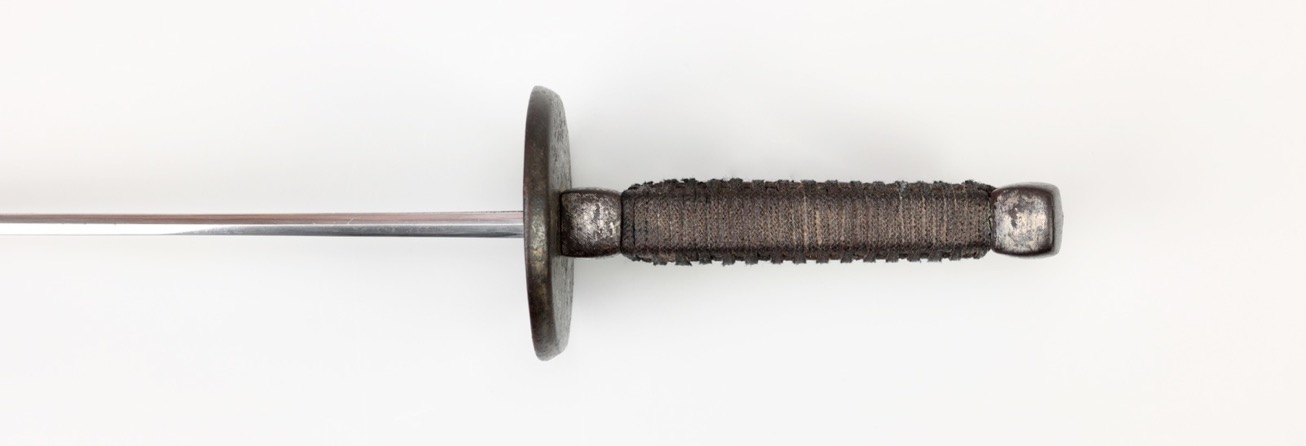
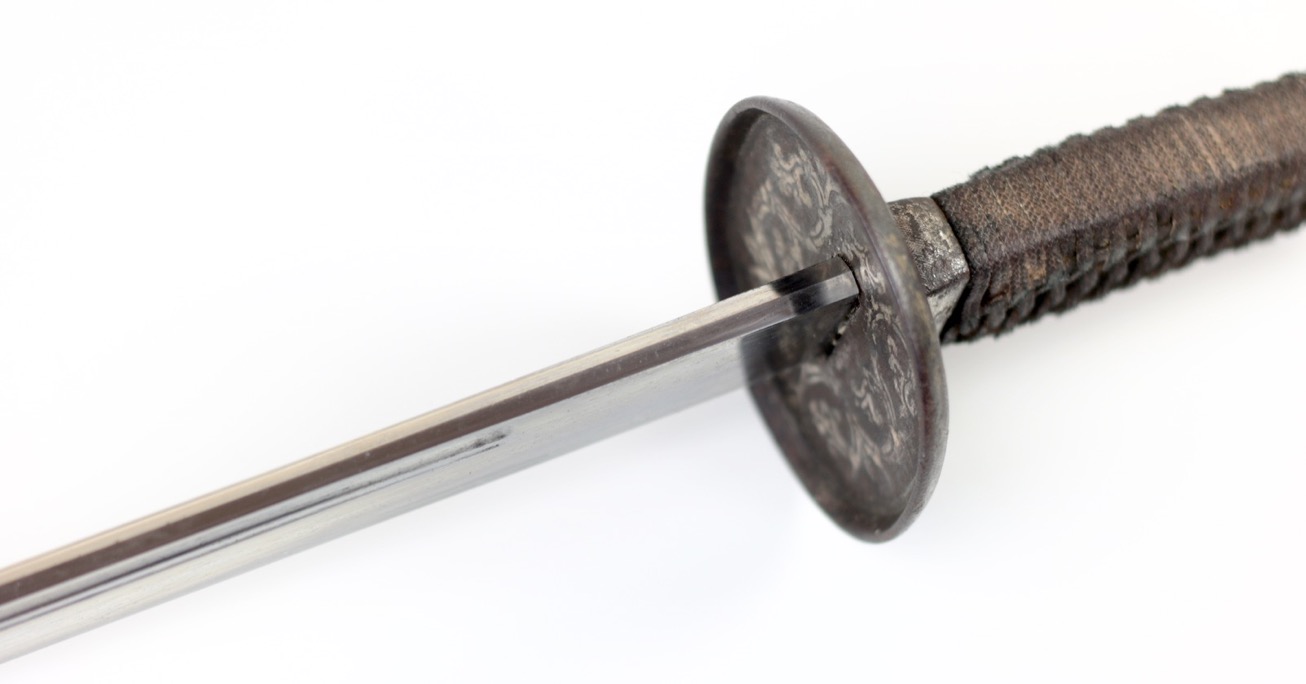
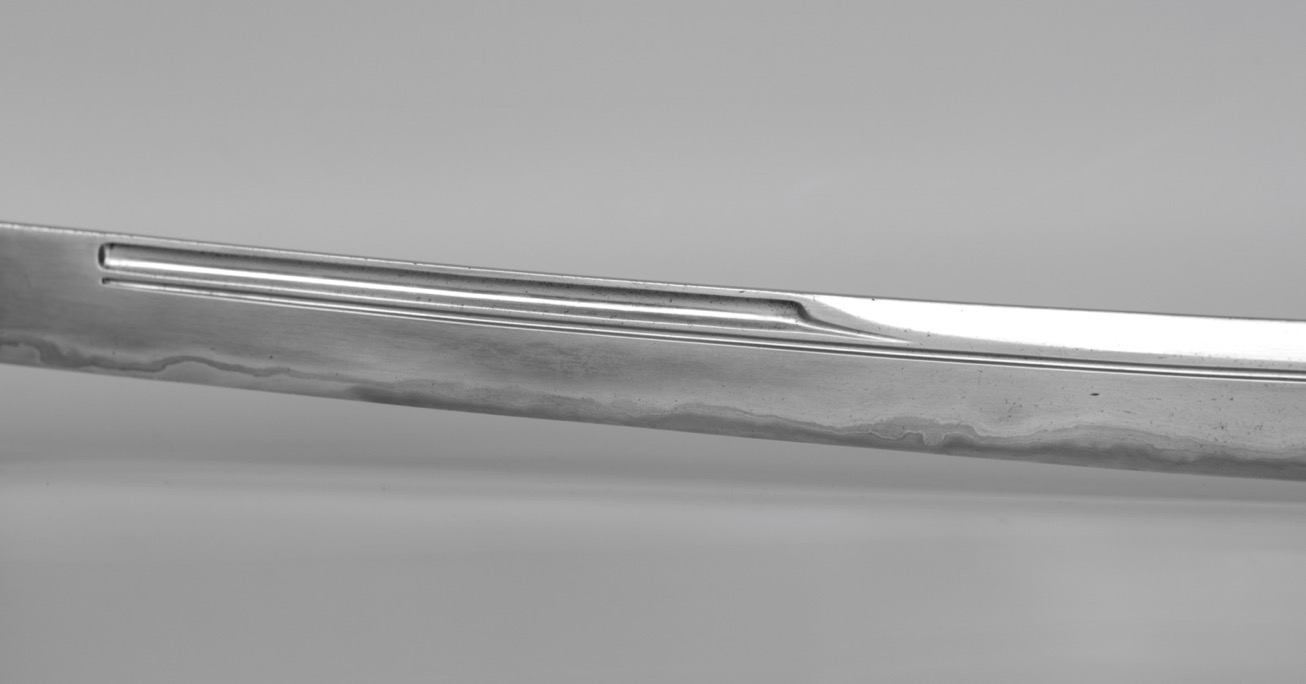
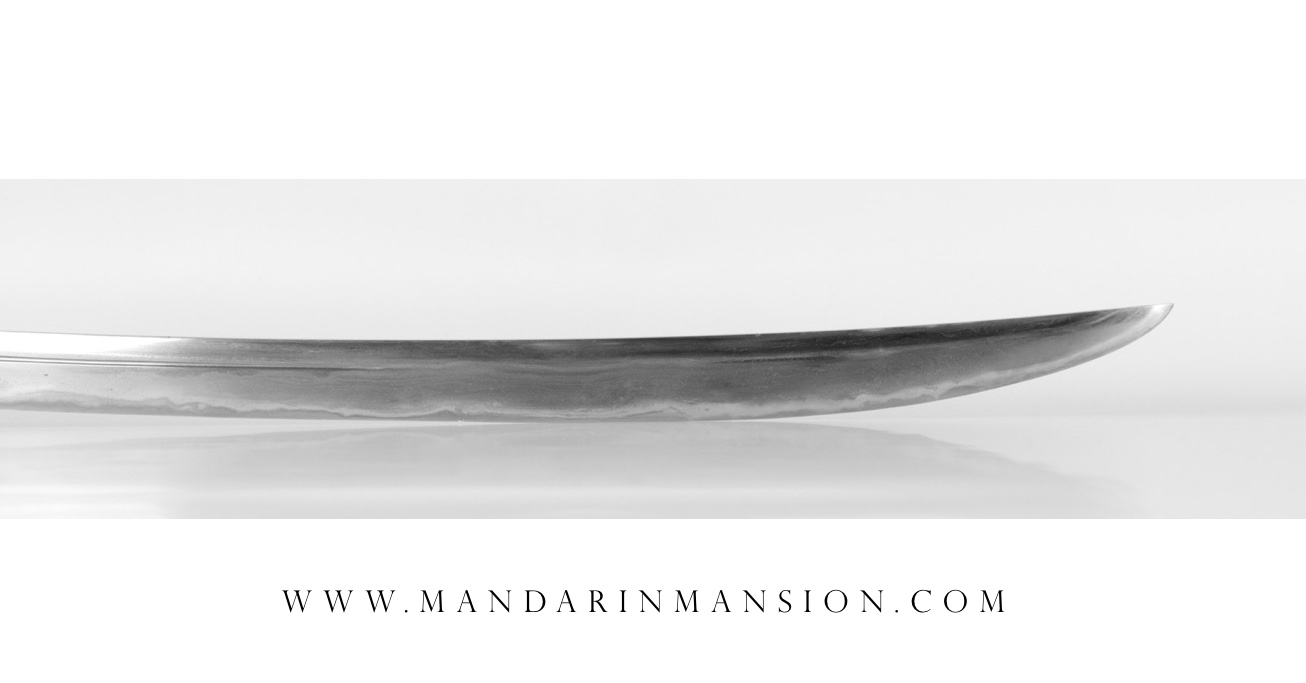
Probably of Southern origin, with a straight blade and flaring tip.
In the style of northern work of the 16th and 17th centuries
A simple utilitarian weapon, probably made for rural martial artists or militia.
A standard pattern Qing military saber, but with the rare addition of a label in Manchu.
